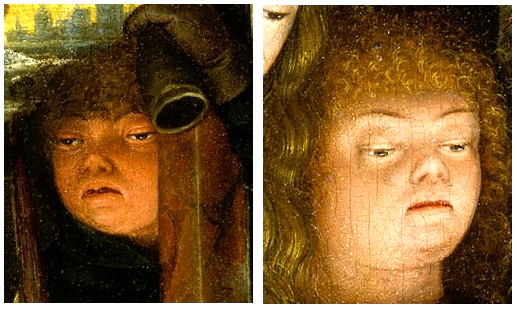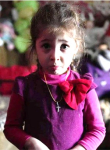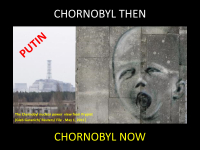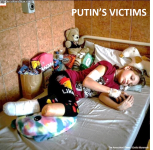Our websites offer information mostly for educational purposes with no intent to alter health care protocols nor to serve as a sole source of medical information.
Always seek the advice of your local health care provider.
|
×  Get the Point! PAIN – WOMAN – UKRAINE – PUTIN MOTHER – SISTER – SPOUSE – MOTHER RUSSIAN WAR – HOLOCAUST – GENOCIDE |
TWO SUGGESTIVE FACIES OF ... ? ... Why? ... Same?
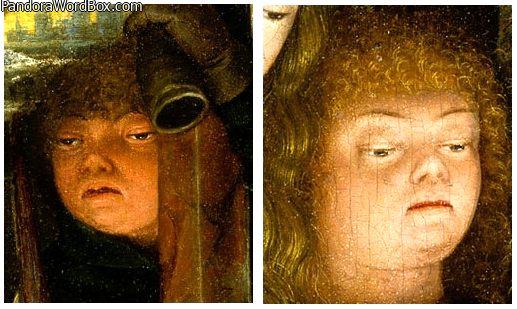
"Adoration of the Christ Child" (details from "The Adoration of the Christ Child"), 1515 Jan Joest van Calkar (1450-1519 ) Metropolitan Museum of Art, New York City, New York, USA
In a single painting, two depictions of "faces that speak out" (FACIES) suggestive of Down syndrome. This artist illustrates similar SIGNS in both individuals. Note that 600 years ago little was known about human disabilities, genetics, or teratology, but clever clinicians knew that children with this sort of FACIES were "different", and that their "prognosis" was characteristic (natural history of this disorder - none of such children achieved full intellectual development) - in short, the concurrent signals were typical or a SYNDROME (by some called "Mongolism", "Kamuk idiocy", or worse) About 150 years ago this syndrome started to be called "Down syndrome" (DS). About 80 years ago, pioneers of human cytogenetics (studies of chromosomes mainly) noted that in this syndrome there was an extra chromosome (3 instead of 2) - "Trisomy 21" became known as the laboratory component of the diagnosis of DS. It has been known for centuries that DS occurs more frequently in children conceived by older women.
Note that this artist had observation skills that should be expected from neonatologists and pediatricians - that is often not so - regrettably! This is the mission of the efforts by Clinical Eye Openers and this Pandora Word Box site.
Signs: low nasal bridge, short nose, downturned oral corners
Signals: similar facies suggestive of Down syndrome
Signals: similar facies suggestive of Down syndrome
20160730 ww
|



